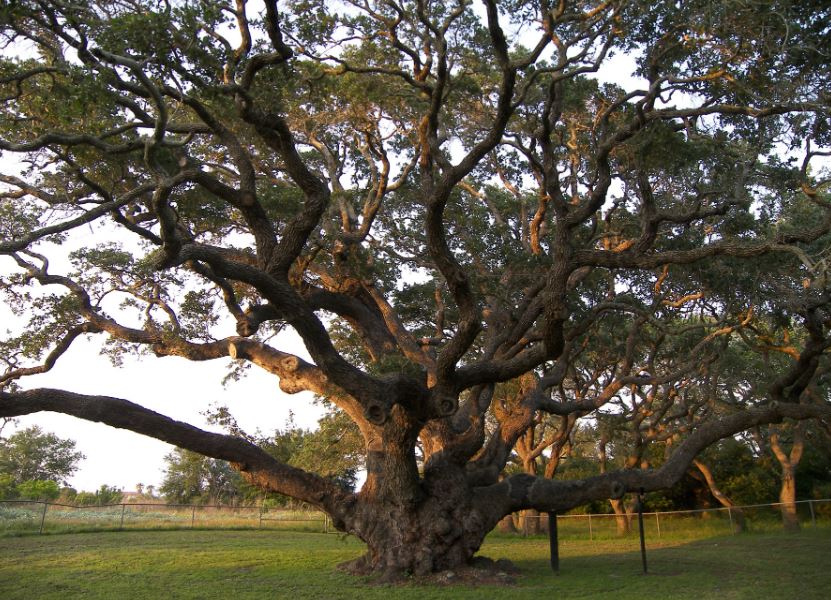Goose Island State Park is north of Rockport, Texas, on the Gulf of Mexico. It covers 321.4 acres (130 ha) and is surrounded by St. Charles and Aransas Bays. The park was founded on private land between 1931 and 1935. CCC built the first structures in this park where the thousand-year-old southern live oak named “The Big Tree” lies in the park. It has an 11-foot circumference, 44-foot height, and 90-foot crown spread (27 m).
The park’s shoreline is concrete, oyster shell, mudflat, and marsh grass, so there is no swimming area. Camping, birding, fishing, and boating are the main park activities that are quite similar to what you can do in Rockport Beaches which is one of the top beaches given a blue certification. The park has about 200,000 visitors and 60,000 overnight campers per year. It has 45 electric and water-powered shade shelters. 57 shelters have electricity and water, and 27 don’t. Trout, redfish, drum, flounder, and sheepshead are commonly caught by fishing lovers.
The Park’s Location and Accessibility
Goose Island State Park is a veritable natural oasis that is unlike any other park in the state of Texas and is located just 10 miles northeast of Rockport in Texas. Guests can park their recreational vehicles (RVs) almost directly on the beach of Aransas Bay, which is located off the coast of the Gulf of Mexico, throughout the entire year. The busiest months are between the beginning of May and the end of September.
Fun Activities to do
Hiking, bird watching, participating in educational programs, and fishing are just some of the activities that can be enjoyed in Goose Island Park. Even fish cleaning stations are available so that you can properly prepare your catch of the day. In addition to beach-side camping, guests who plan to travel with their entire family will have the opportunity to enjoy activities such as playing on the playground, boating on the lake, biking, and watching wildlife. It is important to be aware that swimming is not permitted within the park due to the presence of marshy shorelines and concrete bulkheads, both of which make it difficult and dangerous to enter the lake.
The Big Tree at Goose Island State Park
The Big Tree is a 1,000-year-old live oak. Many generations have used the tree for weddings, picnics, photos, and meditations. Big Tree was a pirate’s rendezvous and a Karankawa Indian ceremonial site, according to legend. Texas Forest Service named Big Tree State Champion Live Oak in 1966. In the same year, it was named National Champion Live Oak and is believed to be the nation’s largest. It was 44 feet tall with a 35-foot circumference and 90-foot crown.
In 2003, a larger live oak tree in Brazoria County dethroned Big Tree. In the San Bernard National Wildlife Refuge, visitors can see the San Bernard Oak. Big Tree is one of the largest and most celebrated live oak trees in Texas and the nation, but it has been declining in vigor despite care from TPWD, arborists, and local contributors over the past decade. The 2009-2014 drought may have contributed to the tree’s decline. Lamar Volunteer Fire Department spent 12 days delivering water to Big Tree in 2009 and 2011.
In cooperation with the Texas A&M Forest Service and TPWD, members of the Texas Chapter of the International Society of Arboriculture (ISAT) will care for the aging tree. This week, ISAT and TFS/TPWD will lead a special work event.
The Geocaching Activity
The sport of geocaching consists of searching for containers called geocaches, which are hidden all over the world by ordinary people like you and me. Every one of the treasure hunts will lead you to an exciting, inventive, or stunning outdoor location.
Geo means the earth, and cache refers to something that is hidden. The size of a geocache can range from something as small as a film canister to something as large as a metal lunch box. A good number of them are hidden, but they are not buried. A logbook in which participants can sign their names, tradable items suitable for both children and adults and other items can be found in geocaches. Find the coordinates of a geocache in the area by utilizing a global positioning system (GPS) device or an app on your smartphone. Then you should get started on your exciting journey.
The Whooping Crane and Other Migratory Birds
Crane watching is one of the many activities you can engage in at the park, not just this but as well as the numerous migratory local birds that you can catch glimpse of. This is one of the beauties of the island life in the bay of Port Aransas and the far stretching coastal areas of the State.
Between 1931 and 1935, the state made the purchase of the land to provide a wintering ground for the critically endangered whooping crane. Late in the month of October marks the beginning of the cranes’ annual migration to Aransas, where they will remain until April. They are birds that migrate in families and establish territories that can be up to one square mile in size in the coastal marshlands of the refuge. These birds are considered territorial. In that region, they consume foods such as blue crabs, clams, and small fish in addition to berries, acorns, roots, and grains.
The whooping crane was a common winter visitor that was mentioned frequently in reports written by travelers and naturalists during the nineteenth century. Even though the whooping crane probably was never abundant in Texas during historical times. Moreover, by the year 1900, population numbers were falling at an alarming rate, and the species had almost entirely vanished from the coast of Texas, with the sole exception of the Blackjack Peninsula, which is located between St. Charles Bay and San Antonio Bay.
Rules for Pets at State Parks.
Nearly all the state parks allow visitors to bring their pets with them. However, they do have some rules. Pets are required to be always kept either on a leash, in a car, or in a crate. There is a maximum length restriction of 6 feet for the leash. You are obligated to remain constantly near your pet. It is against the rules to abandon your pet unattended in the park, whether they be in a vehicle or at your campsite. Do not enter a state park with a dog that is either loud or potentially dangerous.
Inside any of the buildings at a state park, animals of any kind are not permitted. Motels, cabins, screened shelters, group facilities, and restrooms are all included in this category. You are obligated to clean up after your pet and dispose of any waste they produce. It is against the rules to bring pets into a designated swimming area, either in the water or on the surrounding land. You are required to bring along proof that your pet has been always up to date on its rabies vaccination. Should you violate any of these policies, both you and your pet may be asked to leave the premises.






